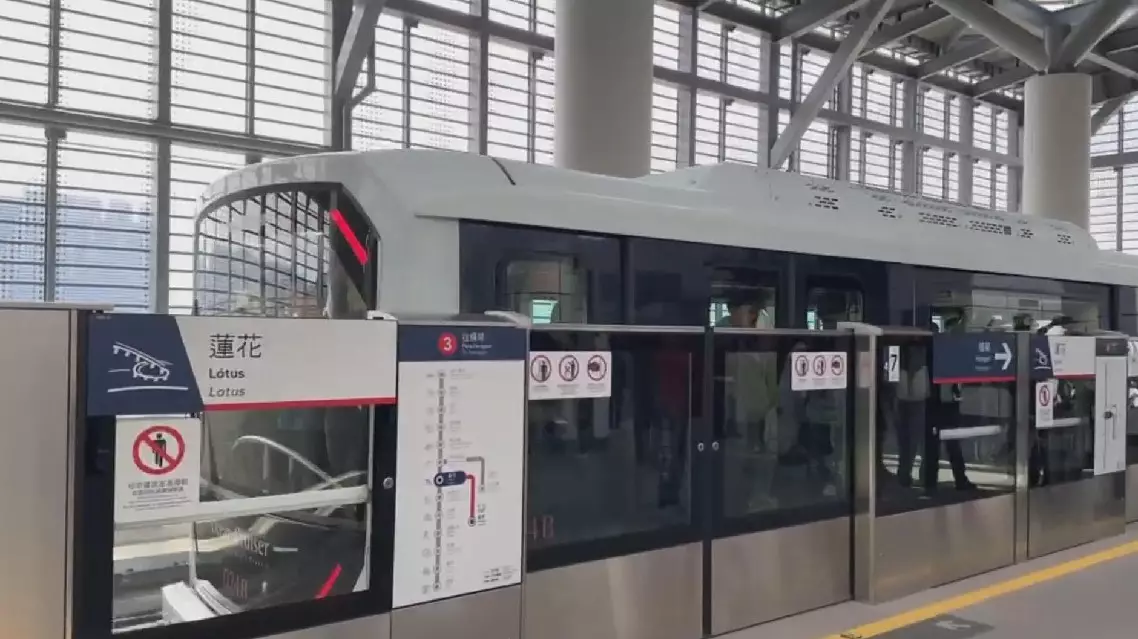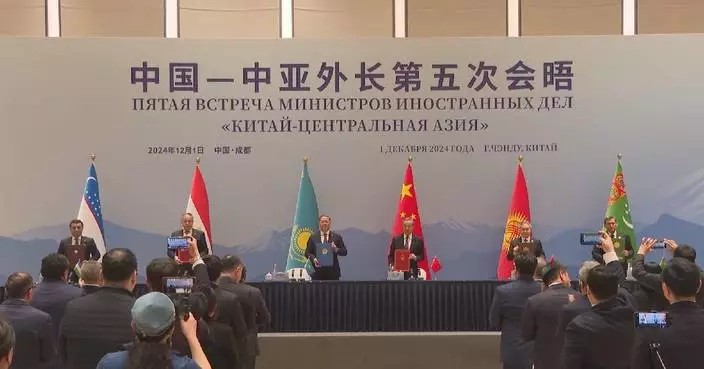The Macao Special Administrative Region welcomed another milestone in transport connectivity on Monday with the official opening of the Hengqin Line on its Light Rapid Transit(LRT) system.
The much-anticipated Hengqin Line -- consisting of the Lotus Station in Macao and the Hengqin Station located across the water in Zhuhai of south China's Guangdong Province -- entered into operation after the first train departed from the Lotus Station shortly after 13:00 on Monday.
The line spans 2.2 kilometers and includes a 900-meter-long underwater tunnel underneath the Shizimen Waterway. The total travel time is just around two minutes, while trains will run every six minutes at peak times, with passengers being processed at the Hengqin Border checkpoint.
Construction on the line began in March 2021 and it follows the opening of the larger Taipa Line five years ago, while further extensions of the rail transit system in Macao are planned in the future. The newly functional Hengqin Line will provide a convenient and efficient transport option for residents and travelers entering and exiting Hengqin Port and help Macao integrate into the "one-hour living circle" of the Guangdong-Hong Kong-Macao Greater Bay Area.
Covering 56,000 square kilometers, the Greater Bay Area encompasses Hong Kong, Macao and nine cities across Guangdong, with the area achieving a total economic output of over 14 trillion yuan (more than 1.9 trillion U.S. dollars) in 2023.

Macao marks transport milestone as Hengqin Line officially put into operation

Macao marks transport milestone as Hengqin Line officially put into operation
China's new tax policies came into effect on Sunday, which are expected to support the steady and healthy development of the real estate market, a pillar industry of the country's national economy.
In mid November, the Ministry of Finance said the country will increase incentives in terms of deed tax to actively support people's essential housing needs and needs for improving their housing conditions.
Individuals purchasing their only residential property or a second home, as long as the area does not exceed 140 square meters, will pay deed tax at a rate of one percent across the country. For properties with an area exceeding 140 square meters, the deed tax will be levied at a rate of 1.5 percent.
Home buyers planning to buy second homes in Beijing, Shanghai, Guangzhou and Shenzhen will benefit the most from the revised deed tax, as a previous rate of three percent had been applied to all four of these first-tier cities, according to officials.
On the morning of Monday, the first working day after the new policies came into force, a tax service hall in downtown Beijing was bustling with homebuyers, accompanied by real estate agents, who seek to pay tax and register their homes.
"This is the second house my family bought. It is about 100-square-meters big at a price of more than eight million yuan (about 1.1 million U.S. dollars). Following the new policy, I paid a deed tax of 80,000 yuan, saving 160,000 yuan compared with the previous policy," said a homebuyer.
"Today is the first working day after the new policy came into force. We and our clients made appointments on this day to handle tax payment and transfer of (house) ownership to enjoy the benefits of the new tax policies as soon as possible," said Sun Licheng, a real estate agent.
"Today, both taxpayers making online applications (for real estate's tax payment and transfer of ownership) and those doing business offline are apparently more than usual. We have not only added three service counters to our tax hall, but also increased staff for offline and online application review," said Chen Zhan, director of the sixth taxation office at the Beijing Haidian District Taxation Bureau under the State Taxation Administration. The Beijing municipal taxation bureau expects the new tax policies to strengthen the property market's recovery momentum, and promote the stable and healthy development of the sector.
Data show that in November, 18,520 pre-owned houses were signed online in Beijing, marking a month-on-month increase of eight percent and a year-on-year growth of 50 percent.

New tax policies in place, property market recovers











